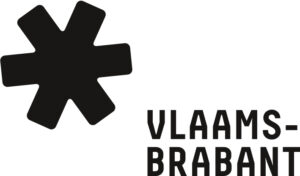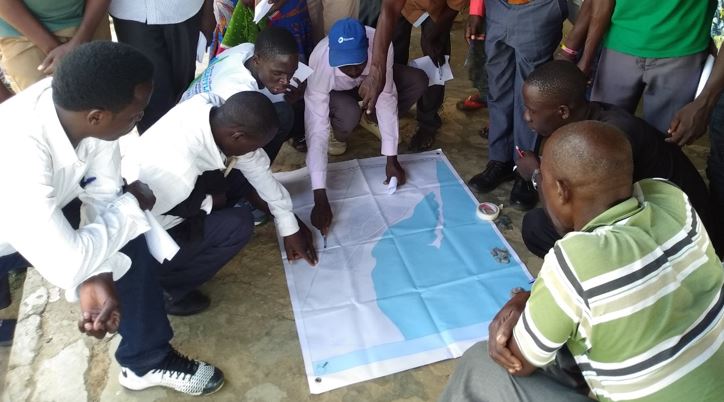UGANDA – National plans for water management in a river basin are necessary. But protection of water resources will not be a fact until local communities are also fully on board and have their say.
Catchment Based Water Resources Management (CBWRM) at national level has led to the development of many large scale catchment plans. This progress is vital, but at the same time, Protection and Conservation of Water Resources Management (PCWR) will practically work when decisions are taken close to the communities where we work. Consequently, there is need for a convergence the top down and bottom up planning processes. Bottom up planning process is critical in integrating the different issues, challenges, concerns, and priorities among diverse groups closer to the hotspots in the targeted micro catchment. The micro catchment planning process is ultimately aimed at taking decision closer and with the communities.
Join for Water with partner JESE (Joint Effort to Save the Environment) have established the micro catchment management plans at community levels with the aim to contribute towards addressing catchment degradation issues, promote conservation and enhance sustainable use of natural resources of the micro catchment for the benefit of the communities. The purpose of the plan is therefore, to enhance provision of socio-economic and environmental services and products for the benefit of present and future generations for improvement of people’s livelihoods, around and beyond the catchment.
Join For Water and partner JESE (Joint Effort to Save the Environment) have over time facilitated the process of formation of the Micro Catchment Plans for Mpanga gorge. At all stages, stakeholders were engaged to ensure thorough engagement and ownership of the plan, which would ultimately ease the implementation. Stakeholder identification was undertaken to determine all organizations and communities, which may be affected (positively or negatively) by the water resources management in the catchment and who may be able to contribute to the programme of work due to their expert knowledge and or experience in the project areas. For example, the operational environment of the River Mpanga Conservation Committee team, in terms of stakeholders in the use, development and management of water resources in the catchment was evaluated, and key stakeholders identified and analysed. The stakeholders also participated in mapping as well as prioritization of issues within the catchment following an assessment of the existing catchment knowledge base, the current and projected water resources situation, the catchment’s social and environmental state, together with stakeholder engagement at various steps through the development of the Micro Catchment Plan led to identification of critical issues, challenges, opportunities, and threats within the Mpanga catchment.
The overall goal is to facilitate and document an empowering process that promotes sustainable coordination, development and management of water and related land resources for improved livelihoods and ecosystem health.
Stakeholders
The micro catchment planning process involves small holder farmers adjacent to the hotspots in the micro catchment, Local leaders, technical persons at Sub County and district, Religious leaders, schools, partners and other CSO’s working within the micro catchment, and any other groups that are co-opted during participatory stakeholder identification processes.
Transect walks
Following the review of existing information, field level assessments (through transect walks and participatory mapping) are usually conducted, whereby activities already happening can be identified, mapped, and their environmental implications determined. This is (largely) a participatory process done together with the stakeholders. The aim of the participatory mapping and transect walks is to make it possible for communities to join the team, to describe and to define the current and desired status of their wetland micro catchment.
As for PCRE program is concerned, community members will be asked to draw a map of their community (and wetlands) as they see it now and how it was in the recent past. Maps drawn by community members will be transferred to charts for further processing and digitizing.
For a successful plan, transect walks are conducted immediately after the participatory mapping exercise, to explore in more detail some of the issues that emerged in the participatory mapping process. During the transect walks, the community members are engaged in discussion about what they are observing as well as clarify or confirm issues that may have emerged in the mapping exercise together with a more practical understanding of the (status of the) area provided through transect walks and participatory mapping can make it possible to determine how the buffer zone has changed in the (recent) past and to infer how it is likely to change in the (near) future if no corrective action is taken. Additionally, map or maps depicting the change are developed which further serve as a visual awareness creation tool that can stimulate corrective action.
Governance
The micro catchment planning process is drawn and guided by principles and concepts described in the National guidelines for Catchment management and planning 2014. The difference however is in the emphasis on bottom up planning. JESE and Join for Water have set up grassroots management structures for the planning, management and monitoring of plan implementation. One such structure responsible for the management and monitoring of how micro catchment plans are implement is the Mpanga Gorge Conservation committee. It is these structures that continue with community engagement but also advocating and lobbying for sustainable ecosystem conservation.
The approach
- In summary, the approach is characterized by a strong emphasis on stakeholder engagement right from planning to implementation in order to ensure that the process and plans thereof are in line with and supported by the views of the stakeholders. This critically ensures that the interests of all stakeholders are taken into consideration. The composition of the stakeholders is based on the issues and concerns identified in the micro catchment and the scope of the area targeted for implementation.
- Bottom up planning is key in integrating the different issues, challenges, concerns, and priorities among diverse groups in the society.
- A rights based approach mainstreamed to ensure Gender and social inclusion. Emphasis on the participation and inclusion of the concerns of women, youth and other groups in society is vital at all stages including; stakeholder identification, Problem analysis, resource mapping, planning, implementation and monitoring.
Shared motivation
The Micro Catchment Planning provides a basis of understanding a complex system and prioritizing key focus areas for effective management taking into consideration potential development opportunities, challenges, risks and threats. Following a participatory approach in developing the Micro Catchment Plan the objective is to provide information and shared motivation that will initiate interventions and or investments that can be implemented to realize sustainable management and development of water resources within the catchment.
Original text: TUSIIME Lawrence and BUSIINGE Christopher JESE-Uganda
With the support of the Province of Flemish Brabant


